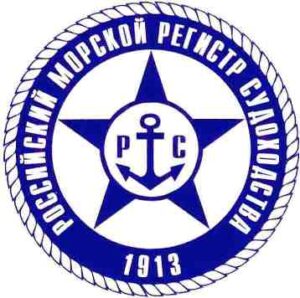
One of the tasks of the Russian Maritime register of shipping (RS) is to confirm the compliance of the vessel and its objects with the established requirements during and after the completion of repairs. Compliance with the requirements of the RS means that the object is in a working technical condition, and the parameters of operational defects are within acceptable standards.
Technical supervision of ship repairs includes:
* review and approval of repair documentation;
* verification of documents for materials (including welding) and products used in repairs, verification of certificates of admission of welders and qualification documents of non-destructive testing specialists, as well as documents on accreditation and recognition of laboratories, etc.;
• inspection and verification of the object at various stages of its repair and consideration of the conclusions of the technical control bodies of the enterprise;
* the presence of an inspector when testing objects during and after repairs and, if necessary, during mooring and sea trials of the vessel.
RS conducts technical supervision of repairs in accordance with a single procedure, both at domestic and foreign shipyards. The procedure is based on the requirements of a number of IACS, IMO documents, rules and guidelines of the RS. RS has the recognition and instructions of the Maritime administrations of 68 flag States (as of 07.04.2020), as well as a wide network of foreign divisions, which allows RS to quickly and reliably provide a full range of services, including technical supervision of repairs, in any region. Thus, among the countries where RS services for technical supervision of ship repair are actively in demand are Turkey, South Korea, and China.
The RS survey during the repair process is subject to those items of the ship that are required by the RS regulations and, if applicable, international conventions and resolutions.
The need to inspect the ship’s RS for repair is determined on the basis of the nomenclature of objects of technical supervision, which is given in Annex 1 of part I of the Rules for technical supervision of the construction of ships and the manufacture of materials and products for ships. The list includes such groups of objects as elements of hull structures, main and auxiliary mechanisms, various ship systems, and others.
If a ship object that is not subject to technical supervision by the RS is undergoing repair (for example, technological equipment), the RS has the right to request that this object be presented during the repair process in cases where this object or its technical condition affects the ship’s compliance with the requirements regulated by the RS rules or international documents. This applies, for example, to the stability, strength of the ship, its fire safety, and prevention of environmental pollution. A similar rule applies in the case of installation on a vessel such objects or their removal from the vessel.
The frequency of repairs does not depend directly on the type and age of the vessel. It is primarily determined by the requirements of documentation for installed equipment, as well as the actual technical condition of the vessel. When performing technical supervision of the repair, the PC is guided by the requirements of the technical documentation of the equipment manufacturer. The requirements specify the repair intervals. If such documentation is not available, the need for repair is determined by the results of the defect. As a rule, repairs are timed to the next or intermediate inspection of the vessel in the dock or afloat.
Due to the variety of modern types of vessels, it is difficult to clearly identify the most popular types of repair work. For example, they will be different for self-propelled and non-self-propelled vessels. Three main groups, as in shipbuilding: repair of hull structures, mechanisms and electrical equipment.
RS is constantly working to optimize the requirements for the thickness measurement process and wear standards, while maintaining the safety level of the vessel’s operation during the classification period. One of the results of this work is the VOLNA software package, implemented in 2017. The program is mandatory for collecting, storing and evaluating the results of measurements of residual thicknesses and parameters of other defects in the hull structures of ships with the RS class, their devices and pipelines, as well as making final reports. The program is used by thickness measurement firms, inspectors, and RS specialists. “VOLNA” has a clear interface, greatly simplifies and unifies the work of operators processing the results of thickness measurements and inspectors checking these reports, allows you to perform the full range of work on evaluating the measurements performed using the appropriate wear standards of the RS, generate a final report and upload data to the RS server. The program is distributed free of charge under the terms of the license agreement.
Origin: https://portnews.ru/projects/pub60/